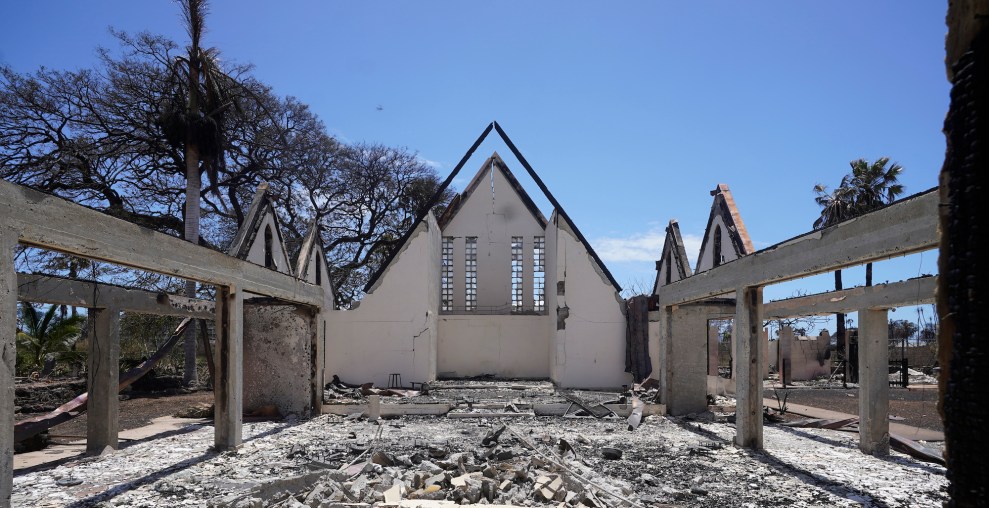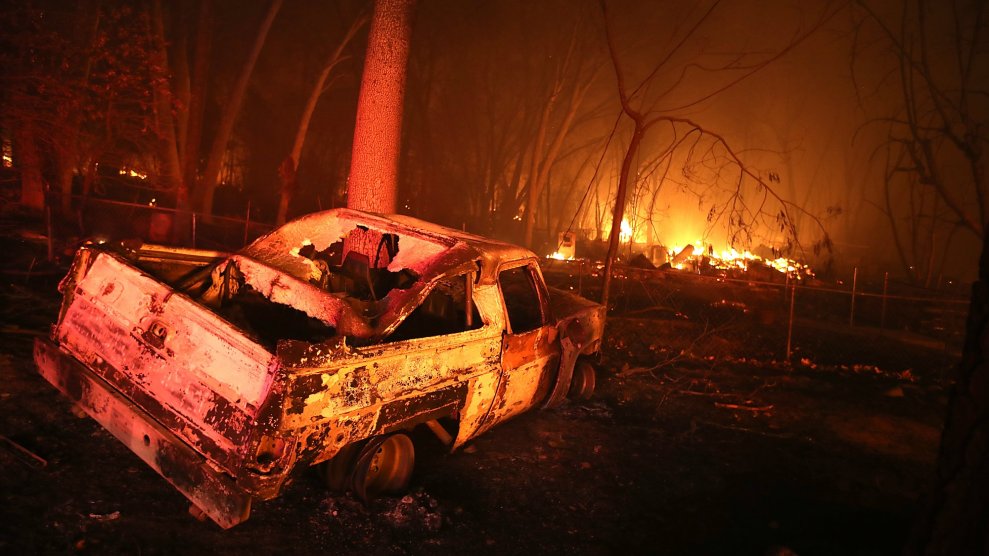
The destroyed Waiola Church following the wildfire in Lahaina, Hawaii.Rick Bowmer/AP
The death toll from the Maui wildfire near Lahaina has risen to 80, county officials announced late Friday. Authorities are still searching for missing people and have indicated that the number of fatalities is expected to rise in the coming days. That means the Hawaii fire could soon become the deadliest wildfire in the United States in more than a century—with loss of life surpassing the 85 people killed during California’s 2018 Camp Fire, which had previously held the record.
The County of Maui announced on Saturday that more than 2,200 mostly residential structures had been damaged or destroyed, citing data from the Pacific Disaster Center and the Federal Emergency Management Agency. Early estimates peg the estimated cost to rebuild at more than $5.5 billion.
The Lahaina fire was exceptionally deadly relative to its size. Compared to the more than 150,000 acres that burned over 17 days during the Camp Fire, the PDC and the FEMA estimate that only 2,170 acres were affected around Lahaina. The devastation resulted partly from the speed at which the fire spread.
On the ground in Maui covering the deadly fire’s aftermath for @AP. It’s hard to describe the extent of the destruction in Lahaina. The entire town is gone. Our reporting team here is dedicated to bringing you the latest and sharing the stories of the people who’ve lost so much. pic.twitter.com/joOpYrGM8j
— Claire Rush (@ClaireARush) August 12, 2023
A timeline from the Associated Press shows that the fire began around Tuesday morning and by the afternoon had already forced the closure of a major road in town. It took more than an hour for county officials to notify residents of the closure. By that point, many people were already trapped. “There was no warning. There was absolutely none,” Lynn Robison, one of the fire’s survivors, told the AP. “Nobody came around. We didn’t see a fire truck or anybody.”
The area’s emergency sirens were never activated. Instead, warnings went out via cell phone, radio, and television—but power outages made those alerts less effective.
The office of state Attorney General Anne Lopez has announced a “comprehensive review” of how officials responded before and during the disaster. “My department is committed to understanding the decisions that were made before and during the wildfires and to sharing with the public the results of this review,” Lopez said. “As we continue to support all aspects of the ongoing relief effort, now is the time to begin this process of understanding.”













